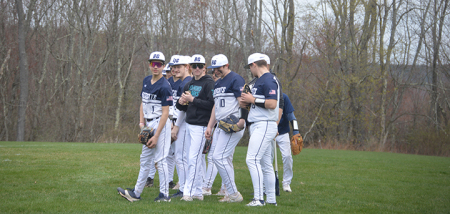Outdoor Chenango: The Do’s And Don’ts Of Blood Tracking Deer
Published:
November 15th, 2023
By:
Eric Davis

The most critical moments of a deer hunt are those right after releasing your arrow or pulling the trigger. The location of your shot determines its fatality. While no hunter intentionally makes a poor shot, there are outside factors that can make the spot you aim for and the spot that is hit be different. Wind gusts, a twig that isn’t noticeable to the naked eye, or the animal moving in response to the shot all can change the course of your hunt.
The most important thing is to be prepared for as many situations as possible. Bring binoculars to your stand and use them to zoom in on shooting lanes to look for twigs or other small objects that can deflect arrows or bullets. If you do this early in the season you can have someone come with you and go trim them as you stay in the stand keeping the correct shooting lane in your vision. Practice shooting with varying wind speeds from different directions (crosswinds alter flight differently than headwinds). If you don’t feel comfortable shooting in a strong crosswind, don’t.
Hunters have a responsibility to try to cause a quick, clean kill with their shot. If a deer is walking or feeding, make a noise to get them to stop and stand still. Some hunters like to say, “MMAAPP” and others will give a little whistle. The key is to get the animal to be still at the time of the shot. Even with all the preparations in the world, less than ideal shots still occur. The invention of the lighted nock for arrows has helped with tracking the arrow’s flight, especially with today’s fast shooting compound bows and crossbows.
Understanding deer anatomy, combined with seeing where the arrow or bullet hits will lead to the first decision, how long to wait before getting down to look for signs of blood. Directly after the shot, watch the animal and how it reacts. A deer that is hit in the heart/lungs will often jump and kick its back legs out. A deer shot in the guts will jump and hunch their hind legs up into their stomach. Deer shot in the liver will just walk or slowly run off but not at full speed.
Watch the deer for as long as you can. If you watch the deer go down, keep an eye on it for a few minutes to make sure it stays down. Keep checking on it with binoculars to see if it is still lively or if it has expired. Make a note of where you last saw the deer if it doesn’t go down within sight. Wait at least 30 minutes for any archery shot deer before getting down to look for blood at the impact site. If your arrow passed through completely, inspect the arrow. Light red blood or lots of bubbles indicate a lung hit. Very dark red blood can mean a liver hit, and green material and a horrible smell means a gut shot. A heart or lung shot deer will expire the fastest and it is okay to take up the blood trail after 30 minutes. Liver and gut shot deer require longer periods of time for the shot to
cause mortality. Wait at least 6 hours on a liver shot deer, and close to 24 hours for a gut shot deer. Due to the shot location on liver and gut shot deer, the blood trail may not be very good as other internal organs can clog the wound channel. Deer shot in the liver and gut will often go just far enough to be out of sight and will then bed down. If you start tracking them too soon, the deer could get up and run off. It will have a lot of adrenaline flowing in its blood and can run a far way before stopping. Also, if it has bedded it may have leaves and other debris sticking to the wound acting like a band-aid making the blood trail even harder to follow. When you are following a blood trail, remember to walk to the side of the blood not on top of it. If you can, have someone help you.
Carry flagging tape so you can mark the trail if you start to lose it. Being able to see flagging in a series can tell you what direction the deer seemed to be heading so you can search or more blood in the most likely location. As you track, keep scanning in front of you. If you see a deer get up from a bed and take off, mark the last blood you saw and back out of the area slowly.
If you are lucky the deer will bed down again and hopefully expire in that location. If you find yourself not finding blood anymore, you can start making circles around the last blood, slowly making the circles bigger each time.
You also can call for a tracking dog. These are certified tracking dogs that are trained to track deer based on the scent the deer leaves as it walks/runs. In New York, tracking dog handlers cannot charge for their services but hunters are encouraged to tip them.
Author: Eric Davis - More From This Author
Comments








